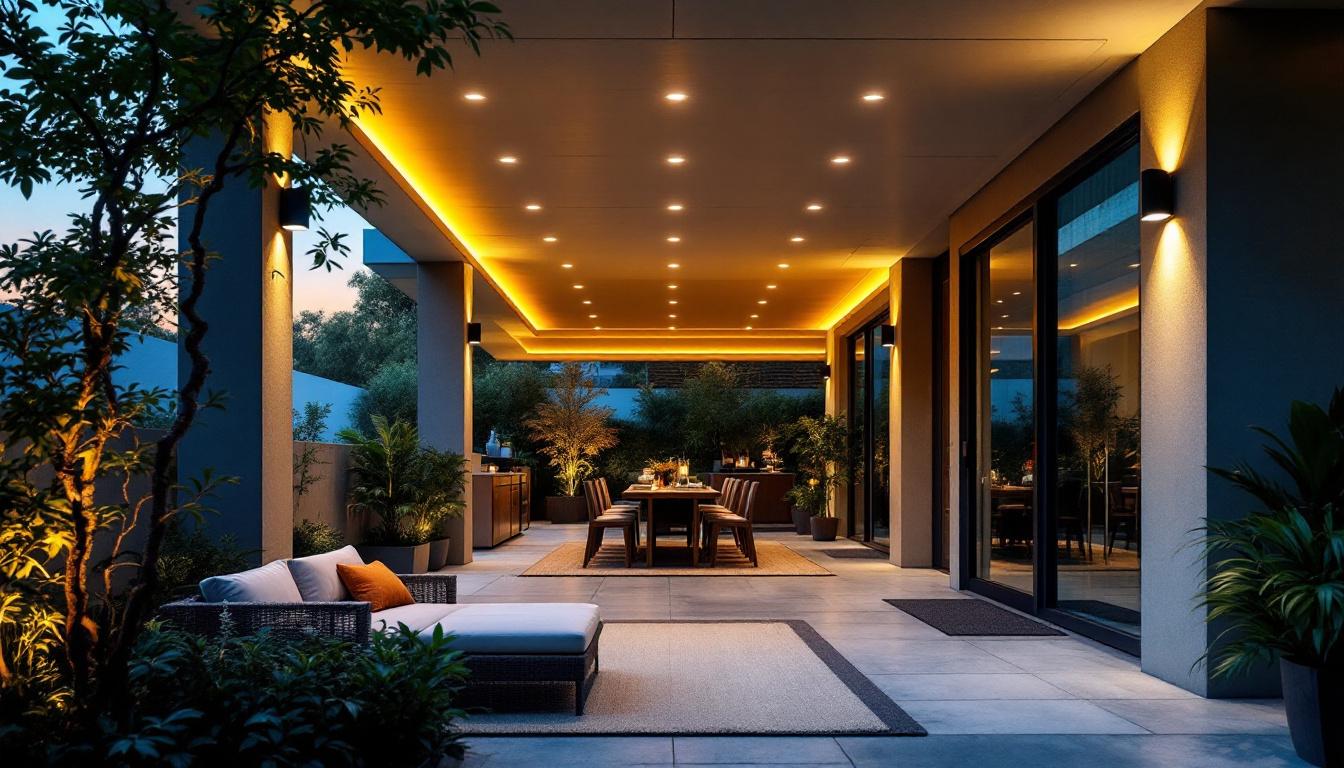
In the ever-evolving world of lighting technology, low wattage lamps have emerged as a popular choice among consumers and contractors alike. These energy-efficient solutions not only reduce electricity costs but also contribute to a more sustainable environment. However, lighting contractors face unique challenges when working with low wattage lamps. This article delves into these challenges and offers practical solutions to help contractors navigate the complexities of low wattage lighting installations.
Low wattage lamps, often characterized by their reduced energy consumption, are designed to provide adequate illumination while minimizing electricity usage. These lamps come in various forms, including LED, CFL, and halogen, each with its own set of advantages and disadvantages. Understanding the intricacies of these lamps is essential for lighting contractors aiming to deliver optimal solutions for their clients.
There are several types of low wattage lamps available on the market. LEDs (Light Emitting Diodes) are the most popular due to their long lifespan and energy efficiency. Compact Fluorescent Lamps (CFLs) are another option, offering a balance between cost and performance. Halogen lamps, while slightly less efficient than LEDs and CFLs, provide a warm light that many consumers prefer.
Each type of lamp has its specific applications, and understanding these can help contractors make informed decisions when recommending products to clients. For instance, LEDs are ideal for task lighting, while CFLs may be better suited for ambient lighting in residential settings. Additionally, the versatility of LED technology allows for innovative applications, such as smart lighting systems that can be controlled via mobile devices, enhancing the user experience and energy management in modern homes.
The benefits of low wattage lamps extend beyond energy savings. These lamps often have a longer lifespan, reducing the frequency of replacements and maintenance costs. Additionally, many low wattage options are designed to be more environmentally friendly, contributing to a reduction in carbon emissions.
Moreover, low wattage lamps can enhance the aesthetic appeal of a space. With advancements in design, these lamps are available in various styles and color temperatures, allowing contractors to create tailored lighting solutions that meet the specific needs of their clients. For example, warm white LEDs can mimic the cozy ambiance of traditional incandescent bulbs, making them suitable for living rooms and bedrooms, while cooler color temperatures can be used in workspaces to promote alertness and productivity. Furthermore, the emergence of dimmable low wattage options allows for greater flexibility in lighting design, enabling users to adjust brightness levels according to their preferences and activities.
While low wattage lamps offer numerous advantages, they also present several challenges for lighting contractors. Understanding these challenges is crucial for developing effective strategies to overcome them.
One of the primary challenges contractors face is compatibility with existing fixtures and dimming systems. Not all low wattage lamps are compatible with traditional dimmers, which can lead to flickering or even complete failure of the lighting system. This issue can be particularly frustrating for clients who expect seamless integration of new lighting solutions.
To mitigate this challenge, contractors should conduct thorough assessments of existing systems before recommending low wattage lamps. This includes checking the compatibility of dimmers and fixtures and, if necessary, suggesting replacements that are designed to work with low wattage options. Additionally, contractors may need to educate clients about the potential need for upgrades to their current systems, which can involve additional costs. Providing a detailed breakdown of these costs and the long-term savings associated with energy-efficient lighting can help clients feel more comfortable with the transition.
Another significant challenge is educating clients about the benefits and limitations of low wattage lamps. Many consumers may be hesitant to switch from traditional incandescent bulbs due to misconceptions about brightness, color quality, and overall performance.
Lighting contractors can address this challenge by providing clear, concise information about the advantages of low wattage lamps. Demonstrating the performance of different lamp types in various settings can also help clients visualize the benefits and make informed decisions. Moreover, creating informative materials, such as brochures or digital presentations, can serve as valuable resources for clients. These materials can outline the environmental benefits, energy savings, and potential rebates available for upgrading to energy-efficient lighting, making the switch more appealing.
Regulatory compliance presents another hurdle for lighting contractors. With the increasing push for energy efficiency, many regions have implemented strict regulations regarding the types of lamps that can be used in residential and commercial settings. Navigating these regulations can be complex, and failure to comply can result in fines or project delays.
Staying informed about local regulations and standards is essential for contractors. Regular training and participation in industry associations can provide valuable insights into compliance requirements and best practices. Furthermore, contractors should consider establishing relationships with local regulatory bodies to ensure they are up-to-date on any changes in legislation. This proactive approach not only helps in avoiding penalties but also positions contractors as knowledgeable experts in the field, which can enhance their reputation and attract more clients.
While the challenges associated with low wattage lamps can be daunting, there are several strategies that lighting contractors can employ to overcome them effectively.
Before embarking on a lighting project, conducting a comprehensive assessment of the existing electrical system is crucial. This includes evaluating the compatibility of fixtures, dimmers, and other components with low wattage lamps. By identifying potential issues early on, contractors can develop tailored solutions that minimize disruptions during installation.
Additionally, understanding the specific lighting needs of the client can help contractors recommend the most suitable low wattage options. This personalized approach not only enhances customer satisfaction but also builds trust and credibility within the client-contractor relationship. For instance, by discussing the intended use of spaces—whether for ambiance, task lighting, or security—contractors can suggest specific low wattage solutions that best meet those needs, ensuring that the client feels heard and valued.
Education plays a vital role in overcoming client hesitations regarding low wattage lamps. Lighting contractors should take the initiative to educate clients about the benefits of energy-efficient lighting solutions. This can be achieved through informative brochures, workshops, or one-on-one consultations.
Providing ongoing support throughout the installation process can also help alleviate client concerns. Offering post-installation follow-ups to address any questions or issues can enhance the overall customer experience and reinforce the contractor’s commitment to quality service. Moreover, creating a resource hub—such as a dedicated section on the contractor’s website—where clients can access FAQs, troubleshooting tips, and maintenance advice can empower them to feel more confident in their lighting choices and foster a long-term relationship with the contractor.
The lighting industry is constantly evolving, with new technologies and regulations emerging regularly. To remain competitive, lighting contractors must stay informed about the latest trends and advancements in low wattage lighting. This includes understanding new products, installation techniques, and regulatory changes.
Participating in industry conferences, workshops, and online forums can provide valuable insights and networking opportunities. By staying updated, contractors can position themselves as knowledgeable experts in low wattage lighting solutions, which can ultimately lead to increased business opportunities. Furthermore, subscribing to industry publications and following influential figures on social media can also serve as a source of inspiration and innovation, allowing contractors to incorporate cutting-edge solutions into their offerings. Embracing these advancements not only enhances the contractor’s skill set but also ensures that clients receive the most efficient and modern lighting solutions available.
Innovation is key to overcoming the challenges associated with low wattage lamps. By embracing new technologies and approaches, lighting contractors can enhance their service offerings and improve project outcomes.
Smart lighting technology is revolutionizing the way lighting systems are designed and controlled. By integrating low wattage lamps with smart technology, contractors can offer clients enhanced control over their lighting environments. Smart systems allow users to adjust brightness, color temperature, and even set schedules, providing a level of flexibility that traditional systems cannot match.
Implementing smart lighting solutions can also lead to increased energy savings, as users can optimize their lighting usage based on their specific needs. Contractors who embrace this technology can differentiate themselves in a competitive market and provide added value to their clients.
In addition to traditional low wattage lamps, contractors should explore alternative lighting solutions that may better suit specific applications. For instance, solar-powered lighting options are becoming increasingly popular for outdoor installations, providing an eco-friendly alternative that reduces reliance on the electrical grid.
By diversifying their product offerings and staying open to innovative solutions, contractors can better meet the diverse needs of their clients while also enhancing their reputation as forward-thinking professionals in the lighting industry.
Building strong relationships with manufacturers can provide contractors with valuable insights into product performance and emerging technologies. Manufacturers often have access to resources, training, and support that can help contractors navigate the complexities of low wattage lighting solutions.
By collaborating closely with manufacturers, contractors can stay informed about the latest product developments and gain access to exclusive training opportunities. This partnership can ultimately lead to improved project outcomes and increased customer satisfaction.
Low wattage lamps offer numerous benefits, including energy efficiency and environmental sustainability. However, lighting contractors face unique challenges when working with these innovative solutions. By understanding the intricacies of low wattage lamps, conducting thorough assessments, and embracing innovative technologies, contractors can effectively overcome these challenges and deliver exceptional lighting solutions to their clients.
As the lighting industry continues to evolve, staying informed and adaptable will be crucial for contractors seeking to thrive in a competitive market. By prioritizing education, collaboration, and innovation, lighting contractors can position themselves as leaders in the field of low wattage lighting, ultimately benefiting both their businesses and their clients.
Ready to tackle the challenges of low wattage lamps and elevate your lighting projects? At LumenWholesale, we provide lighting contractors with the highest quality, spec-grade lighting products at prices that can’t be beaten. Say goodbye to local distributor markups and hello to a vast selection of reliable lighting solutions that meet rigorous industry standards. Plus, enjoy the convenience of free shipping on bulk orders, ensuring you get the best value without any hidden costs. Elevate your lighting game with LumenWholesale, where quality, affordability, and convenience come together seamlessly. Wholesale Lighting at the Best Value is just a click away.

Discover the essentials of wall pack lighting tailored for contractors.

Explore the impact of garage lighting on the profitability of lighting contractors.

Discover innovative hacks for smart lighting contractors to elevate their projects with recessed exterior ceiling lighting.

Discover how to transform your studio with the perfect ceiling lights.